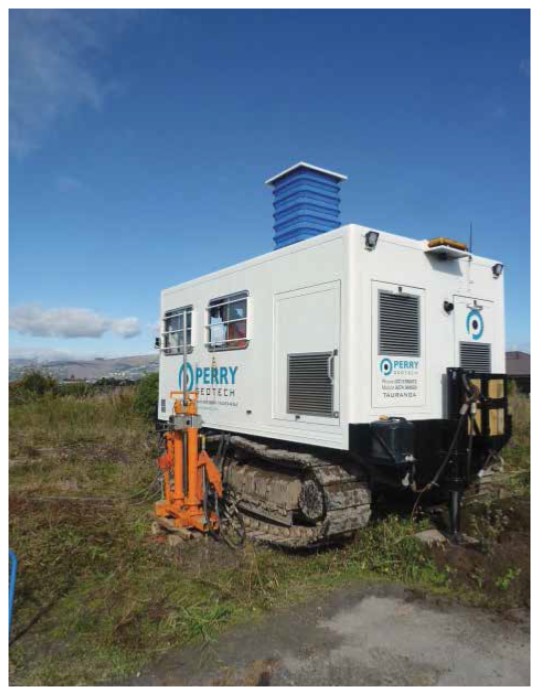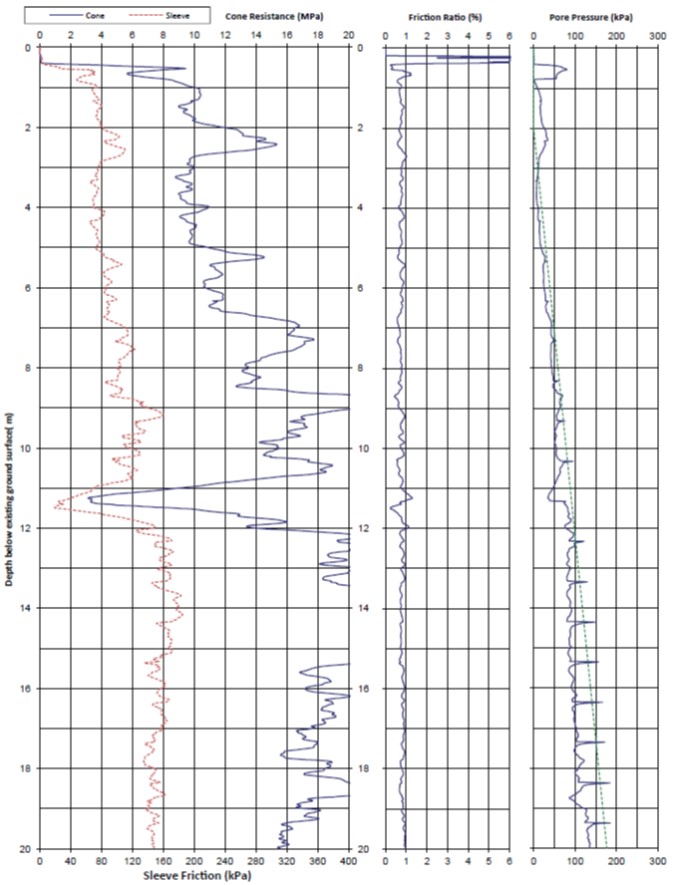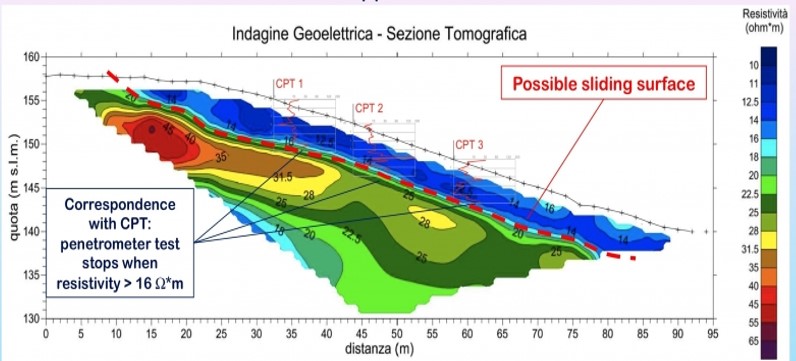A cone penetration test (CPT) is used to determine geotechnical properties of soils. The CPT has become internationally one of the most widely used and accepted test methods for determining geotechnical soil properties. The data gained from a CPT can be used to assess whether soil layers are likely to liquefy under different levels of shaking.
The CPT can be completed from the ground surface. CPT rigs vary in size – from small portable rigs to large truck-mounted rigs. Each rig has benefits and limitations but they all conduct the same test. A CPT rig pushes a steel cone (about 32 mm wide) into the ground, generally up to 20 m below the surface or until the cone reaches a hard layer. The steel cone contains an electronic measuring system that records tip resistance and sleeve friction.
As the cone is pushed into the ground, the soil responds with differing degrees of resistance. This resistance is recorded using force sensors in the tip.
At the same time as the sensors are recording resistance at the cone tip, sensors in the friction sleeve are recording sleeve friction along a 100 mm length. Some cones also have a pore water transducer, which records water pressure in the soil. These readings can be used to determine ground water responses as the cone is pushed through the soils.
A CPT typically takes between 30 minutes and three hours. As the cone goes into the ground, measurements are constantly sent back to the rig and recorded on computer.

Cone penetration test (CPT) rig
CPT results are used by geotechnical engineering specialists to understand the soil properties (the relative density of the soil and the soil behavior type, both of which are calculated from the CPT cone tip resistance and sleeve friction) and how the ground is likely to behave under different levels of earthquake shaking. This information can help in the design of foundations and ground improvements.
By doing a test before and after ground improvement works, CPT results can also be used to determine how much strength a soil has gained following ground improvement works.

An example of CPT measurements

